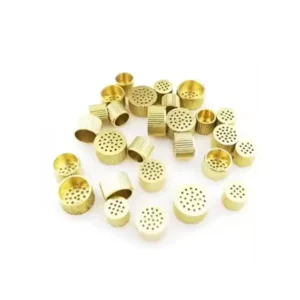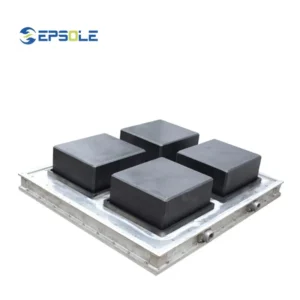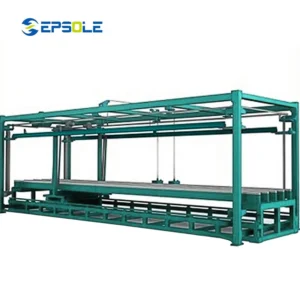Insulating your home is crucial for energy efficiency and comfort. Two popular options are foam board and fiberglass insulation, each with unique properties. This blog will explore the key differences between these materials, focusing on their installation, R-values, and moisture resistance.
We’ll delve into the pros and cons of each, helping you determine which insulation type best suits your specific needs and climate. From cost considerations to environmental impact, this comparison aims to provide a comprehensive understanding of foam board versus fiberglass insulation.
What Is Foam Board Insulation
Foam board insulation, also known as rigid foam insulation, is a type of thermal insulation material manufactured from various polymers, including expanded polystyrene (EPS), extruded polystyrene (XPS), and polyisocyanurate (polyiso). Its rigid structure provides excellent thermal resistance, effectively reducing heat transfer through walls, roofs, and foundations. This makes it a popular choice for both residential and commercial construction.
The closed-cell structure of foam board insulation contributes to its high R-value, which measures its resistance to heat flow. Additionally, many foam board types offer moisture resistance, preventing water absorption and mold growth. Their durability and ease of installation make them a versatile option for various insulation applications, from exterior sheathing to interior wall insulation.
What Is Fiberglass Insulation
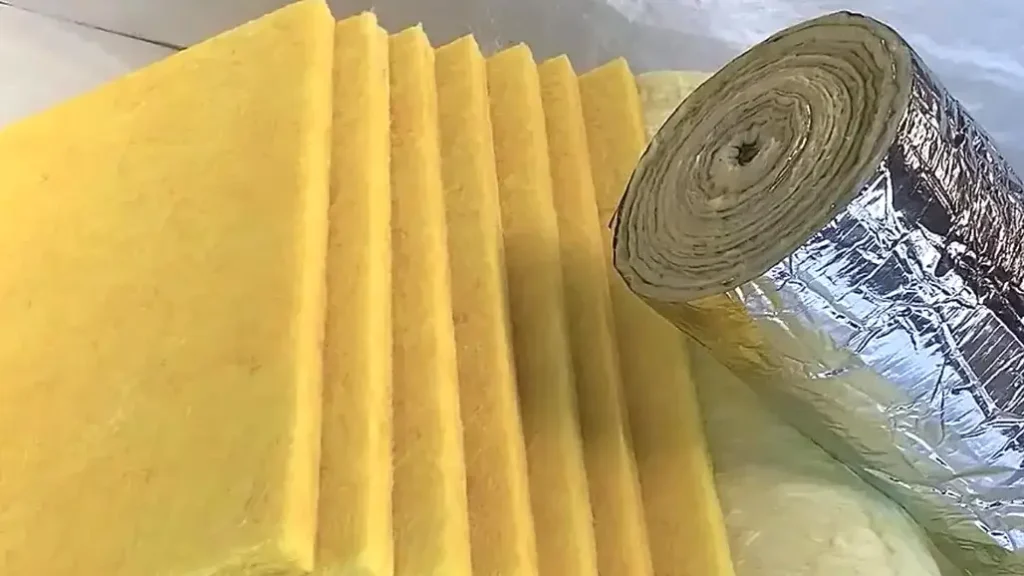
Fiberglass insulation is a widely used thermal insulation material composed of fine glass fibers interwoven into a wool-like texture. It’s typically manufactured from recycled glass, sand, and other raw materials, which are melted and spun into thin fibers. These fibers are then bonded together with a resin to form batts, rolls, or loose-fill insulation.
Its primary function is to reduce heat transfer, making it effective in insulating walls, attics, and floors. Fiberglass insulation works by trapping air within its fibers, creating pockets that resist the flow of heat. This makes it a cost-effective solution for improving energy efficiency in both residential and commercial buildings.
Foam Board vs Fiberglass Insulation
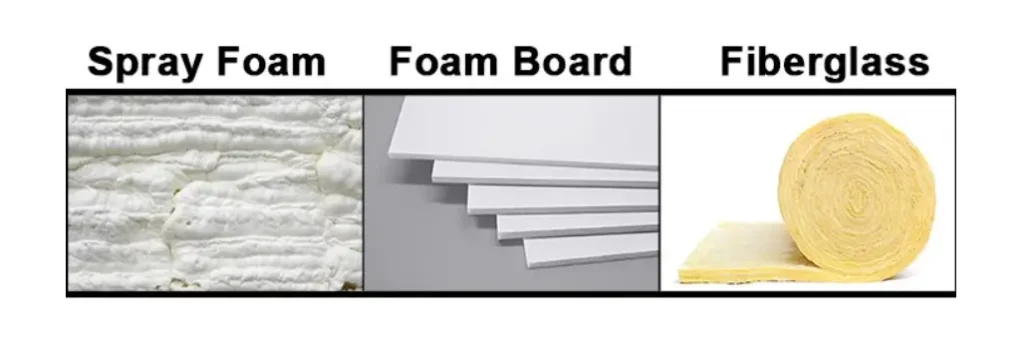
Foam board and fiberglass insulation, while both serving the purpose of thermal regulation, differ significantly in their composition, performance, and application. Understanding these distinctions is crucial for selecting the appropriate insulation material for your specific needs.
Foam board, primarily composed of rigid polymer foams like EPS, XPS, or polyiso, offers superior thermal resistance per inch of thickness compared to fiberglass. Its closed-cell structure minimizes air infiltration, contributing to a higher R-value and enhanced energy efficiency. Additionally, foam board exhibits excellent moisture resistance, preventing water absorption and the potential for mold growth. Its rigid nature also provides structural support, making it suitable for exterior applications such as sheathing or foundation insulation. However, foam board can be more expensive than fiberglass and may require specialized installation techniques.
Fiberglass insulation, on the other hand, consists of fine glass fibers interwoven into a flexible material. Its primary advantage lies in its affordability and ease of installation. Fiberglass batts and rolls can be readily cut and fitted into various spaces, including irregular shapes and tight corners. It’s a popular choice for interior applications such as wall and attic insulation.
However, fiberglass is susceptible to moisture absorption, which can reduce its insulating effectiveness and promote mold growth. It also offers lower R-values compared to foam board, requiring thicker layers to achieve similar thermal performance. Furthermore, fiberglass can release airborne fibers during installation, necessitating proper safety precautions.
Here’s a table showing the key differences between foam board insulation vs fiberglass insulation :
| Feature | Foam Board Insulation | Fiberglass Insulation |
| Material Composition | Rigid polymer foams (EPS, XPS, Polyiso) | Fine glass fibers bonded with resin |
| R-Value (Thermal Resistance) | High (typically higher per inch) | Moderate (lower per inch) |
| Moisture Resistance | Excellent | Poor (susceptible to moisture absorption) |
| Air Infiltration | Low (closed-cell structure) | Moderate to High |
| Installation | Requires more precision; may need specialized techniques | Easy to install; batts and rolls readily fit various spaces |
| Cost | Higher initial cost | Lower initial cost |
| Durability | High (rigid and resistant to damage) | Moderate (susceptible to compression and damage) |
| Application | Exterior walls, foundations, roofs, interior walls | Interior walls, attics, floors |
| Environmental Impact | Varies depending on foam type; some concerns about blowing agents | Often made from recycled glass; potential for airborne fiber release |
| Structural Support | Can provide structural support | Does not provide structural support |
Is Foam Board Insulation Better Than Fiberglass

Choosing between foam board and fiberglass insulation involves understanding their distinct properties and suitability for different applications. Both materials offer thermal resistance, but their performance varies based on factors like moisture resistance, R-value, and installation requirements. This guide explores the key differences to help you make an informed decision.
Thermal Performance
Foam board insulation generally offers a higher R-value per inch compared to fiberglass. This means foam board provides better thermal resistance in a thinner profile, which can be advantageous in spaces with limited room. However, fiberglass can achieve comparable overall R-values when installed in thicker layers. It is important to note, the r value of foam board is more stable over time then that of fiberglass.
Moisture Resistance
Fo Fiberglass can absorb moisture, which reduces its R-value and can lead to mold growth and decay. Foam board, especially closed-cell types, acts as a moisture barrier, maintaining its insulating properties in damp environments.
Installation and Cost
Fiberglass insulation is generally less expensive than foam board and easier to install in irregular spaces. It’s available in batts or rolls, making it suitable for filling gaps and cavities. Foam board requires more precise cutting and fitting and may require specialized fasteners. However, foam board provides a continuous insulation layer, reducing air leakage and improving overall energy efficiency.
Environmental Impact
Both foam board and fiberglass have environmental considerations. Some foam board types, like EPS, can release blowing agents during manufacturing. Fiberglass production requires significant energy, and some types contain formaldehyde. Consider the environmental impact and recyclability of each material when making your choice.
Foam Board Insulation vs Fiberglass R-Value
When comparing foam board and fiberglass insulation, a key factor is their R-value, which indicates their resistance to heat flow.
Understanding R-Value
- A higher R-value means better insulation.
- R-values can vary based on factors like material density and manufacturing.
Foam Board vs. Fiberglass R-Value Comparison
Here’s a table summarizing typical R-values:
| Material | Typical R-Value per Inch | Notes |
| Expanded Polystyrene (EPS) | 3.6 – 4.0 | Relatively cost-effective foam board. |
| Extruded Polystyrene (XPS) | 4.5 – 5.0 | Higher moisture resistance than EPS. |
| Polyisocyanurate (Polyiso) | 5.5 – 8.0 | Highest R-value among common foam boards. |
| Fiberglass Batts | 2.2 – 3.8 | Commonly used in walls and attics. |
| Fiberglass Loose-fill | 2.2-4.3 | Variation depends on the density of the blown in product. |
Key Considerations:
- Foam board generally offers a higher R-value per inch than fiberglass.
- The total R-value of an insulation system depends on its thickness and installation.
- It is important to look at the R value of the specific product that you are purchasing, as values can vary between manufactures.
Foam Board vs Fiberglass Insulation for Soundproofing
While both foam board and fiberglass insulation offer some soundproofing capabilities, they achieve it through different mechanisms and with varying degrees of effectiveness.
Fiberglass Insulation for Soundproofing:
- Mechanism: Fiberglass excels at absorbing sound waves within its fibrous structure. The loose, interwoven fibers trap sound energy, converting it into heat. This is particularly effective at reducing airborne sound transmission, such as speech or music.
- Effectiveness: Fiberglass is a good choice for soundproofing interior walls, ceilings, and floors. It’s especially effective at absorbing mid-to-high-frequency sounds. However, it’s less effective at blocking low-frequency sounds.
- Installation: It’s relatively easy to install fiberglass batts or rolls within wall cavities, making it a popular choice for DIY soundproofing projects.
Foam Board Insulation for Soundproofing:
- Mechanism: Foam board’s rigid structure primarily works by blocking sound transmission. Its density and mass help to reduce the passage of sound waves through walls and floors.
- Effectiveness: Foam board is more effective at blocking low-frequency sounds than fiberglass. It can also help to reduce flanking noise, which travels through structural elements. However, it’s less effective at absorbing airborne sound within wall cavities.
- Installation: Foam board installation can be more complex, requiring careful sealing of seams and edges to prevent sound leaks. It’s often used in conjunction with other soundproofing materials, such as resilient channels or mass-loaded vinyl.
- It’s important to remember that foam board is used mainly for thermal insulation, so although it adds some sound proofing characteristics, that is not its main function.
Key Differences and Considerations:
- Sound Absorption vs. Sound Blocking: Fiberglass primarily absorbs sound, while foam board primarily blocks it.
- Frequency Range: Fiberglass is better at absorbing mid-to-high frequencies, while foam board is better at blocking low frequencies.
- Combined Approach: For optimal soundproofing, it’s often recommended to use a combination of both fiberglass and foam board, along with other soundproofing materials.
- Mass: In sound proofing mass is your friend. adding more mass to a wall will reduce sound transfer much more effectively than just adding insulation.
Sum up:
- If your primary concern is reducing airborne sound, fiberglass is a good choice.
- If you need to block low-frequency sounds, foam board can be helpful, but it’s typically used in conjunction with other soundproofing strategies.
It’s crucial to consider the specific type of sound you want to block and the overall soundproofing goals when choosing insulation materials.
Foam Board vs Fiberglass Insulation Cost
It’s tricky to give exact costs for insulation materials, as prices fluctuate based on location, supplier, and the specific product. However, I can provide a general cost comparison between foam board and fiberglass insulation, presented in a table format:
Foam Board vs. Fiberglass Insulation: Cost Comparison
| Material | Typical Cost Considerations | Notes |
| Expanded Polystyrene (EPS) | Lower to Moderate | Generally the most affordable type of foam board. |
| Extruded Polystyrene (XPS) | Moderate | More expensive than EPS, but offers improved moisture resistance. |
| Polyisocyanurate (Polyiso) | Higher | The most expensive foam board option, known for its high R-value. |
| Fiberglass Batts/Rolls | Lower | Generally the most cost-effective insulation material overall. |
| Fiberglass Loose-fill | Lower to moderate | Price varies on the density blown in. |
Important Considerations:
Installation Costs:
- Fiberglass is often DIY-friendly, reducing labor costs.
- Foam board installation may require specialized skills, increasing labor costs.
Long-Term Savings:
- While foam board may have a higher upfront cost, its superior R-value can lead to greater energy savings over time.
Regional Variations:
- Insulation costs can vary significantly depending on your geographic location.
Material Thickness:
- The cost of both types of insulation will change depending on the thickness of the product that is purchased.
Obtaining quotes from local suppliers and contractors is always recommended to get accurate pricing for your specific project.
Can You Put Fiberglass Insulation Over Foam Board

Yes, you can install fiberglass insulation over foam board, and it’s a practice often used to enhance the overall insulation performance of a building.
This combination leverages the strengths of both materials. The foam board provides a continuous air barrier and high R-value, particularly effective in preventing thermal bridging and air leakage. The fiberglass insulation, installed over the foam board, adds additional R-value and fills any gaps or cavities that the rigid foam might not perfectly cover, ensuring comprehensive insulation.
When combining these materials, proper installation is crucial. The foam board should be installed first, creating a continuous, sealed layer over the framing. This layer acts as an air and moisture barrier. Then, the fiberglass insulation can be installed in the stud cavities over the foam board. This method helps to maximize the thermal efficiency of the wall assembly, reducing energy costs and improving comfort.
It’s important to consider moisture management when combining these materials. While foam board acts as a vapor retarder, fiberglass can trap moisture if not installed correctly. Ensure proper ventilation and consider using a vapor barrier on the warm side of the insulation, depending on your climate, to prevent moisture buildup and potential mold growth. This combination can be very efficient, but proper installation is key.
Conclusion
In the battle of insulation, foam board and fiberglass each offer distinct advantages. Foam board excels in rigidity and moisture resistance, making it ideal for exterior applications. Fiberglass, with its affordability and adaptability, shines in interior spaces and irregular areas.
Ultimately, the optimal choice hinges on project specifics, budget, and climate. Foam board provides superior thermal resistance and durability, while fiberglass offers cost-effectiveness and ease of installation. Careful consideration of these factors ensures effective and long-lasting insulation.
For high-quality foam board solutions tailored to your insulation needs, contact Epsole today. We provide a wide range of foam board products designed for optimal thermal performance and durability. Reach out now to discuss your project requirements and bulk order options.

